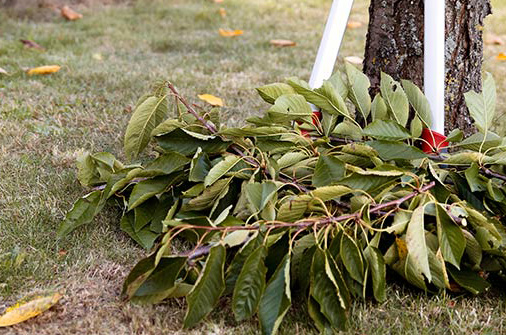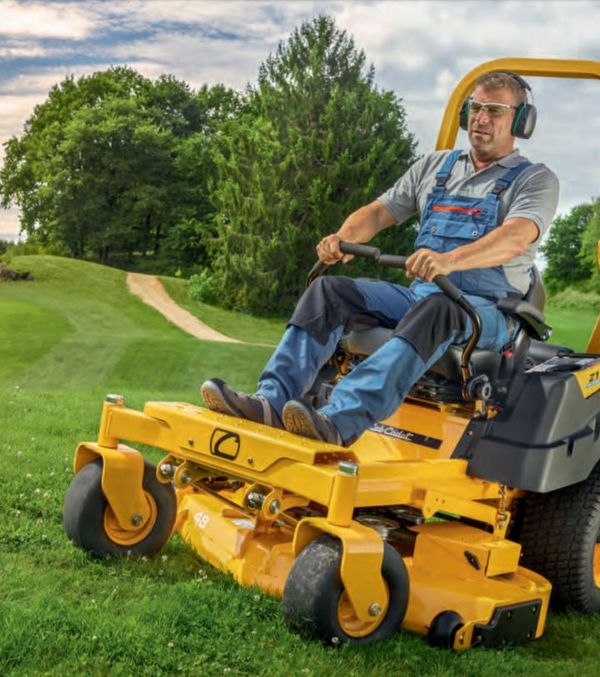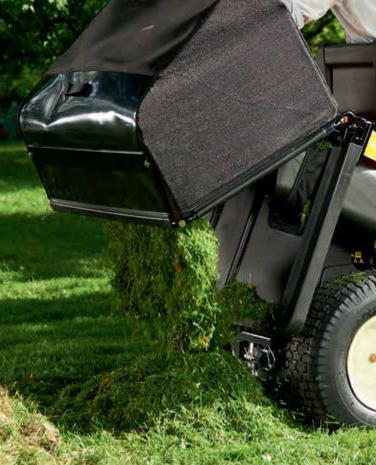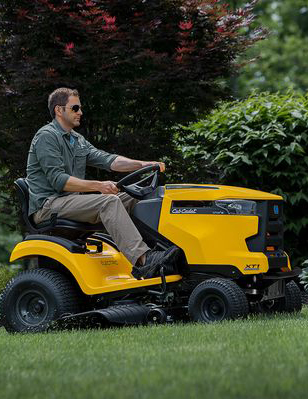Which lawn tractor is suitable for slopes?
Slopes and inclines are a real challenge in gardens, especially when mowing. If they are too steep, mowing the lawn with a lawn mower is often no longer possible. The same is true for lawn tractors. But are there lawn tractors that are particularly desirable for slopes?


This is important for lawn tractors on slopes
In order for lawn tractors to function properly on slopes, the engine needs what is known as forced-feed lubrication. If the engine has an oil filter, it is highly likely that pressure lubrication system is also present, which and helps provide lubrication to the engine even when it is on a slope.
In dry weather, a rear-wheel drive fitted with studded tires and a differential lock for necessary grip is sufficient in many cases. The so-called AS profile of the tires is generally more convincing than conventional tires in terms of load-bearing capacity, traction, service life and soil protection.
However, you are typically on the safe side with an all-wheel drive lawn tractor that is specially designed for slopes with gradients of up to 25° or more. These models typically also sound a warning if the slope is too steep. An additional measure can be executed by attaching a counterweight to help keep the lawn tractor securely on the ground.
Obviously, power is also critical to how smoothly the lawn tractor operates on slopes. For slopes and inclines, 11 hp engines (or more) are recommended. At the same time, the lawn tractor must not be too heavy. Otherwise, maneuvering on the slope will be difficult.
Another rule of thumb refers to the wheelbase: the steeper the terrain, the wider the wheelbase should be. Tractors with dual tires are also available for semi-professional and professional use, but this could be overkill for private users in most cases.
Equipment features such as the cutting width and a voluminous grass catcher further facilitate the work .. A rear discharge is also advantageous when mowing on a slope, as a side discharge can sacrifice maneuverability. Moreover, if you have planted the slope with a tall-growing grass, rather than a short ornamental lawn, special mower bars are recommended.
Using lawn tractors properly on slopes
Unlike classic lawn mowers, which are pushed across an incline, lawn tractor drive exclusively up and down. We recommend turning before the top of a slope to help avoid tipping..
In damp or wet grass, the risk of tipping over and slipping can increase. For that reason, it is advisable to drive at a reduced speed. Here, too, AS tires can improve grip on slopes and inclines. Some people also swear by snow chains (if the appearance of the lawn is only of secondary importance). However, both variants are by no means a guarantee for optimum grip, so the manufacturer's specifications for the maximum slope are primarily valid and should be followed.


Alternatives to the lawn tractor on slopes
If the slope in your garden is simply too steep for push lawn mowers or lawn tractors, it doesn't mean you have to give up a beautiful lawn. Robotic mowers are suitable for use on steeper terrain (typically up to 45° depending on the model). Special traction wheels help provide the necessary grip even on wet grass.
If, on the other hand, you attach more importance to manual work than to an accurately cut lawn, the use of lawn trimmers and power scythes is also an option.
Less common are special hover mowers, which can be moved in any direction with minimal effort and can also be suitable for steep slopes. However, these devices are usually wired and are particularly suitable for smaller slopes that are mowed frequently (at least once a week).
Which lawn tractors are suitable for slopes?
It is recommended to place importance on certain equipment features when choosing a lawn tractor for a slope. Typically , devices with a four-wheel drive and / or studded tires, help provide strong traction. Despite similar characteristics, however, not all tractors are suitable for the same slopes. Accordingly, it is always worth while to take a look at the manufacturer’s specifications.
